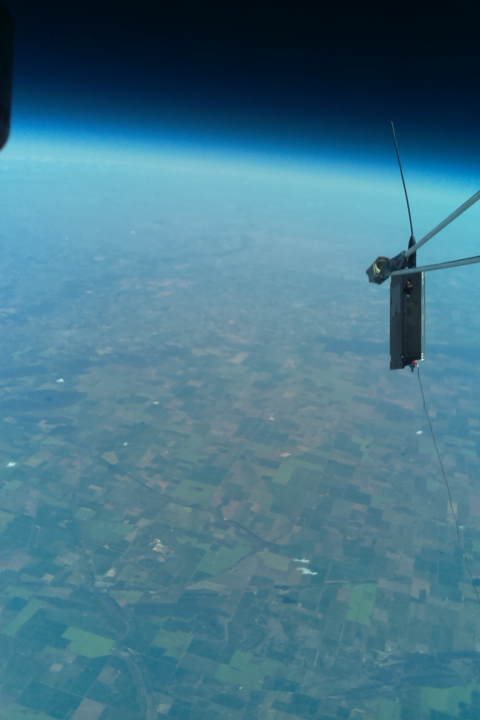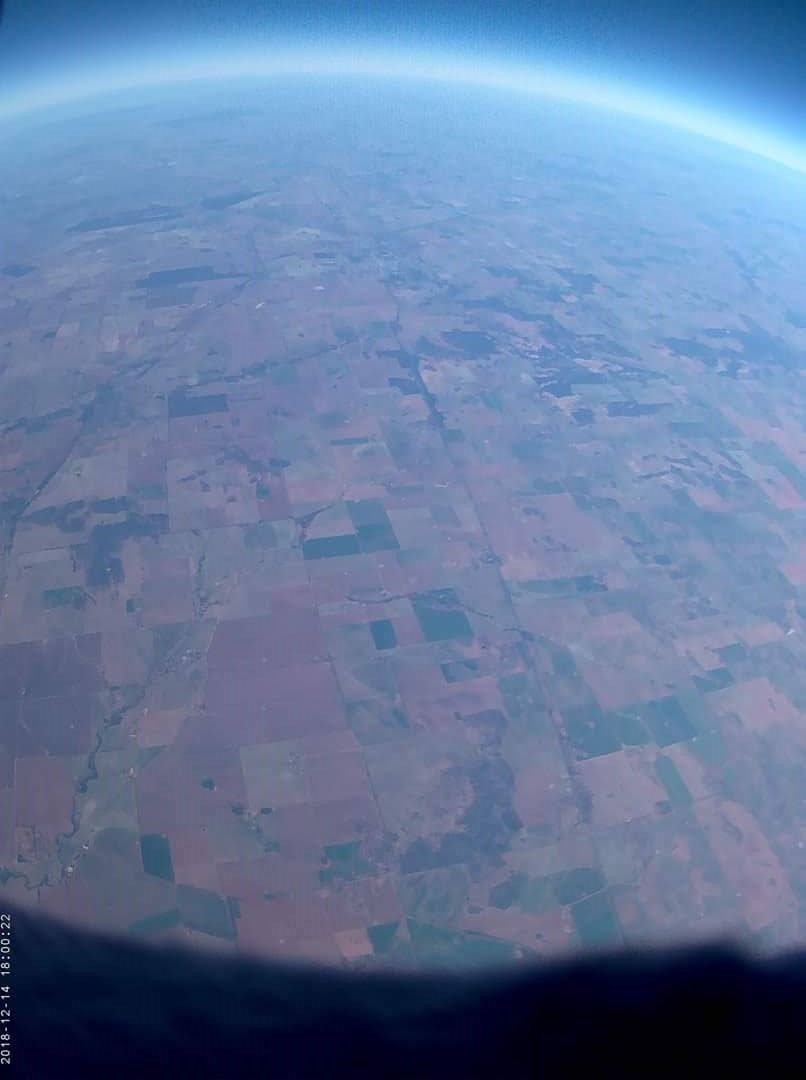Main menu
MarsCube
PROJECT OVERVIEW
This proposal capitalizes on previous Mars Society Australia (MSA) experience in development and testing of low-cost sensors and robotics applications. The Marsobot project, initiated by MSA from 2012 has developed and tested a series of sensors in Mars analogue environments. These have included multispectral cameras, structure from motion applications, spectrometers and autonomous identification of remotely sensed spectra.
Marsobot research has been supported though in-kind support by Thunderstruck Aerospace, University of New South Wales, Canberra and Horus, Adelaide. The project has also generated peer-reviewed publications, which are listed in Appendix A.

MSA (Mars Society Australia) proposes to design, build and test a red-edge remote sensing payload suitable for ground, near-space and space environments. This work will include space system engineering activities, including design and build, verification and validation, and integration and test.
This work will largely be funded by Geoscience Australia and operate in partnership with CUAVA as subsystem within a cubesat. This will develop experience in designing for the space environment, returning useful science and advancing Australian space industry and expertise. Specifically the MSA payload shall:
• Return scientific data on red-edge minerals and materials commonly found on Mars;
• Employ on-board processing to minimize payload data requirements;
• Occupy no more than 1U of cubesat space;
• Weigh no more than 1.5 kg;
• Use no more than 10 watts of power;
• Advance Australian space industry; and
• Develop space heritage for MSA.
PROJECT TEAM
Principal Investigator
Dr Steven Hobbs - swhobbs2000(at)hotmail.com
Co-Investigators
Robert Brand - Thunderstruck Aerospace CEO
Marina Costelloe - Geosciences Australia Patron
Jon Clarke - MSA President
Ivor Cairns - CUAVA
AIMS/OBJECTIVES
Minerals exhibiting phenomenology in the red-edge portion (600-800nm) of the electromagnetic spectrum are commonly found on Mars. Investigation provides useful information on current environmental conditions and insights into historic eras more favorable to Martian life. Additionally, red-edge remote sensing has been useful for vegetation analysis and astrobiological investigations.
Red-edge spectroscopy, investigating wavelengths between ~650-750 nm has been of particular interest for terrestrial remote sensing applications, including vegetation analysis (Gupta et al., 2003; Cho and Skidmore 2006; Darvishzadeh et al., 2009; Guo et al., 2017). Particular minerals identified in the Solar System also exhibit spectral phenomenology that can potentially be exploited with a red-edge sensitive sensor. These include olivine, pyroxene, and plagioclase with absorption bands related to Fe 2+ ions in their structure and hydrated minerals such as serpentine (Burns 1970; Smith et al., 1997; Schade et al. 2004; Kohout et al. 2017). The discovery of hematite, which exhibits characteristic spectra in the red-edge wavelengths, was of particular interest to Martian exploration due to it being present in hydrated environments, and potential astrobiology implications (Bell et al. 2003, 2008; Barlow 2008). The discovery of crystalline grey hematite on Mars has been linked to formation within surface or near-surface liquid water, stable for millions of years (Christensen et al., 2001). Olivine, a volcanically-derived mineral also found on Mars can also be successfully detected within these wavelengths (Smith et al. 1997; Golombek et al. 1999; Bell et al. 2003, 2008). Further, the detection of red-edge minerals has been used for landing site selection in landing missions (Bell et al. 2008).
Two payloads will be built and tested to provide affordable, scientifically useful red-edge remote sensing from near-space and low Earth Orbit (LEO) environments. The payloads will be designed as a ride-share subsystem in a cubesat mission for launch no earlier than 2022. Verification and validation of these payloads will empower a domestic deep-space effort for Mars exploration.
PROPOSED RESEARCH
This proposal is for the design, development and testing of two 1U remote sensing payloads suitable for near-space and space applications. These payload designs are based on incremental development, validation and testing principles, and scaled accordingly in complexity. Both payloads will be subject to integration and testing, including stratospheric balloon flights in Mars-like conditions.
.jpg)
Payload 1
Payload 1 will comprise three instruments that will sense the Earth and surrounding environment. On-board processing will vastly reduce data requirements of the payload. Data will be processed and queued with the main cubesat command and handling system for transmission to Earth.
The payload shall use the Raspberry Pi as its main processor and comprise the following:
• A Raspberry Pi NOIR camera, fitted with a red filter in order to capture normalized difference vegetation indices (NDVI);
• A Sparkfun AS7262 visible spectrometer on a chip; and
• ICM 20948 IMU for inertial measurements.
Technology Readiness Level
The Raspberry Pi camera and microprocessor, and AS7262 spectrometer have successfully flown to near-edge of space on a high-altitude balloon experiment conducted in March 2019. A breadboard version of this payload exists and has been tested in a laboratory environment.
Payload 2
Payload 2 will comprise three instruments that will sense the Earth and surrounding environment. On-board processing will vastly reduce data requirements of the payload and will be demonstrated on ground and high altitude balloon flight versions prior to space flight. Brassboard testing has shown the Raspberry Pi to be capable of on-board image and video processing sufficient for red-edge exploitation. Data will be processed and queued with the main cubesat command and handling system for transmission to Earth.
The payload shall use the Raspberry Pi as its main processor and comprise the following:
• A hyperspectral pushbroom sensor using the Raspberry Pi NOIR camera, diffraction grating and optics;
• A Sparkfun AS7262 visible spectrometer on a chip; and
• ICM 20948 IMU for inertial measurements.
Payload 3
This payload will comprise a ground robotic vehicle/drone ready hyperspectral pushbroom sensor for Mars analogue applications. This sensor will use an industrial monochrome sensor to provide accurate measurements in the red-edge spectrum. It will also be used as a proof-of concept for the space-based pushbroom sensor.

RESEARCH PRODUCT/DELIVERABLES
| Milestones | Deliverables | |
| Yr 1 | Q1 | Brassboard design of payload 1 and ground test; publication of breadboard payload 2 comparison |
| Q2 | PCB balloon payload designed and constructed; Payload 3 construction | |
| Q3 | Payload 1 balloon launch and test, data analysis; paper publication | |
| Q4 | Space qualification testing, flight and engineering spare verified and validated | |
| Yr 2 | Q1 | Brassboard design of payload 2 and ground test; Payload 3 ground test |
| Q2 | Near-space Payload 2 engineered | |
| Q3 | Payload 2 balloon launch and test, data analysis; paper publication | |
| Q4 | Space qualification testing, flight and engineering spare verified and validated |

